Find Help
More Items From Ergsy search
-

Having a hysteroscopy as an outpatient (English)
Relevance: 100%
-

What is Drugs Rehab?
Relevance: 17%
-

Can a womb lining test detect cancer?
Relevance: 12%
-

Finding out about Fibroids - information for patients
Relevance: 12%
-
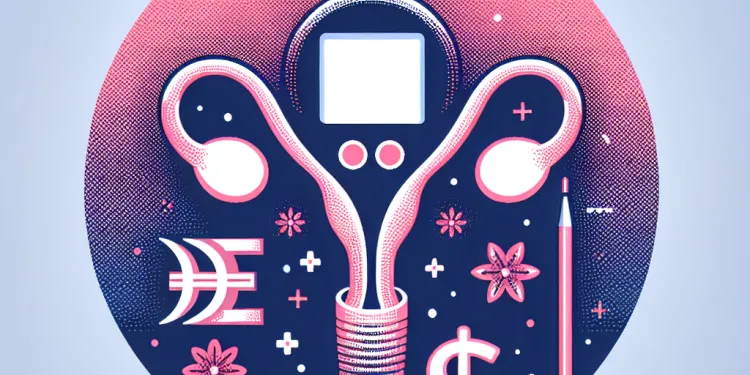
Can a womb lining test detect cancer?
Relevance: 11%
-

Heavy periods (heavy menstrual bleeding)
Relevance: 11%
-

What is Medicare and what does it cover for seniors?
Relevance: 10%
-

Undergoing day case surgery at University Hospitals Bristol
Relevance: 9%
-

Where can I get the flu vaccine?
Relevance: 9%
-

Eating disorders: treatment
Relevance: 8%
-
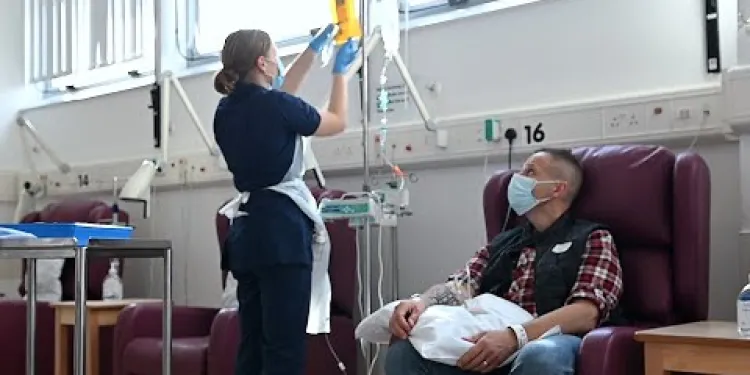
Having chemotherapy and other treatments in the Day Treatment Unit
Relevance: 8%
-

The treatment approach for an eating disorder
Relevance: 8%
-

What is an endoscopy?
Relevance: 7%
-
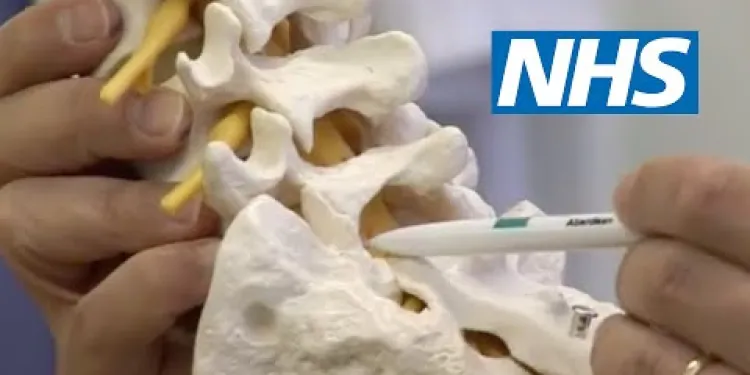
Lumbar surgery | NHS
Relevance: 7%
-
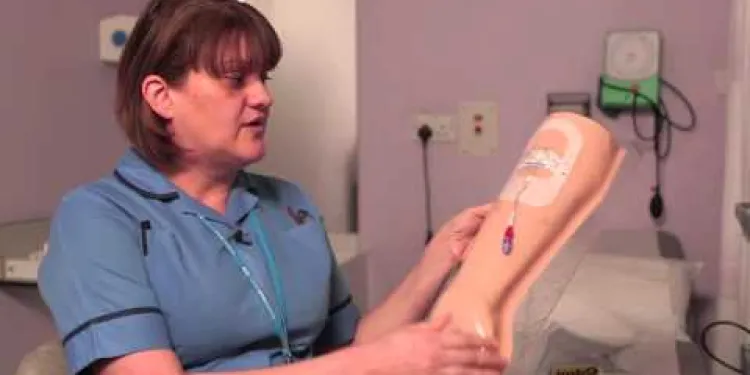
Chemotherapy - The Queen's Centre
Relevance: 6%
-

Anorexia nervosa | NHS
Relevance: 6%
-
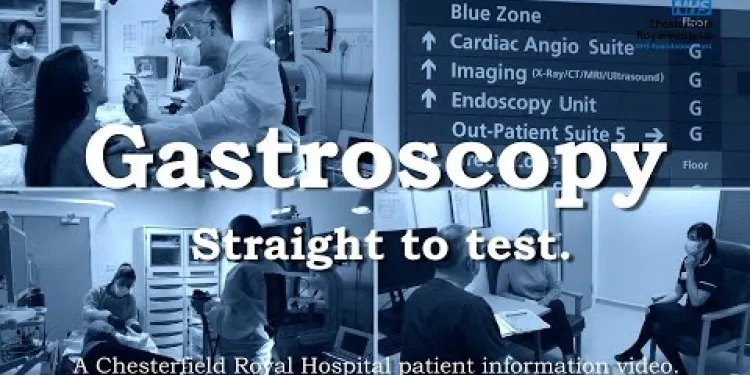
Gastroscopy - What to Expect on Referral to Chesterfield Royal Hospital
Relevance: 6%
-
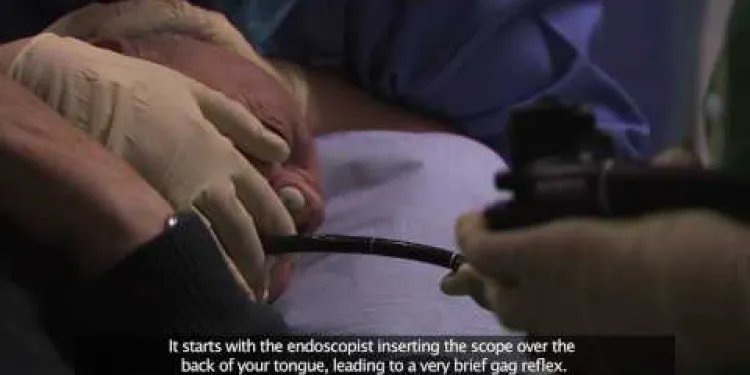
Bournemouth Digestive Diseases Centre: Gastroscopy Procedure (Subtitled)
Relevance: 6%
-

Having a colposcopy at Leeds Teaching Hospitals
Relevance: 6%
-

Abdominal Aortic Aneurysm (AAA) screening programme
Relevance: 6%
-

Navigating Mental Health Services for Children and Adolescents
Relevance: 6%
-

What is the recovery time for a hip replacement?
Relevance: 6%
-

Will I need physical therapy after a hip replacement?
Relevance: 6%
-

What is egg retrieval?
Relevance: 6%
-
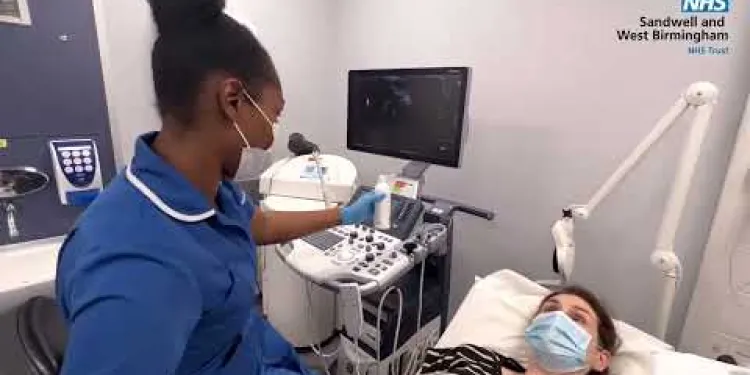
Post Menopausal Bleeding Clinic | A Guide to What Happens at An Appointment
Relevance: 6%
-
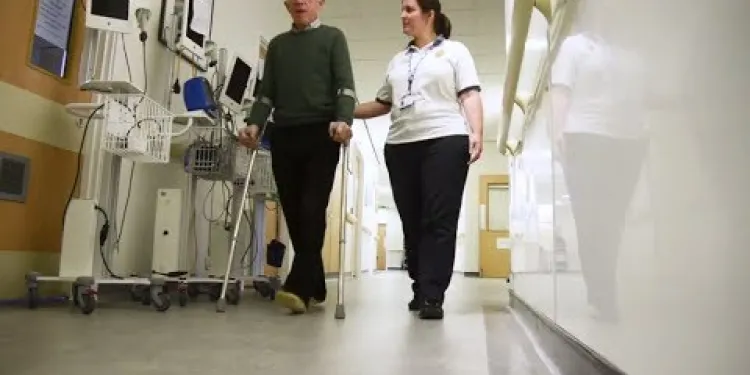
Having a hip replacement - Part Two: Recovery
Relevance: 6%
-
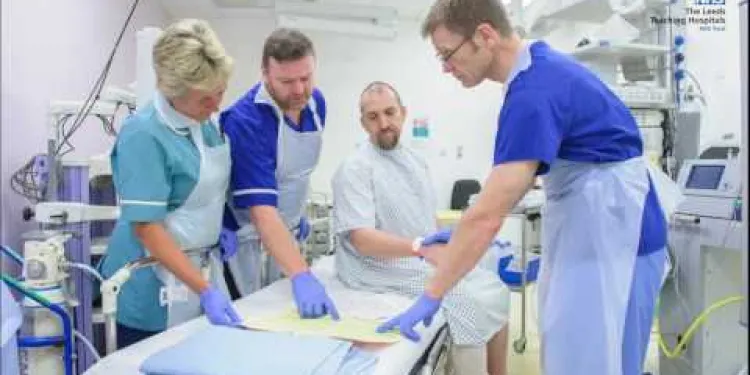
Endoscopy Introduction - The Patient Journey
Relevance: 6%
-

Total knee replacement
Relevance: 6%
-

What is a mini facelift?
Relevance: 6%
-

What is Alcohol Rehab?
Relevance: 6%
-

Treating prostate cancer
Relevance: 5%
-

Cornea transplant patient Information
Relevance: 5%
-
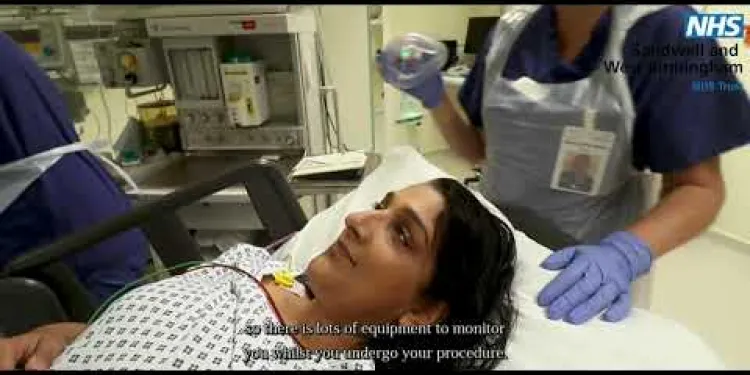
What to expect when visiting our hospitals for surgery | Theatres
Relevance: 4%
-
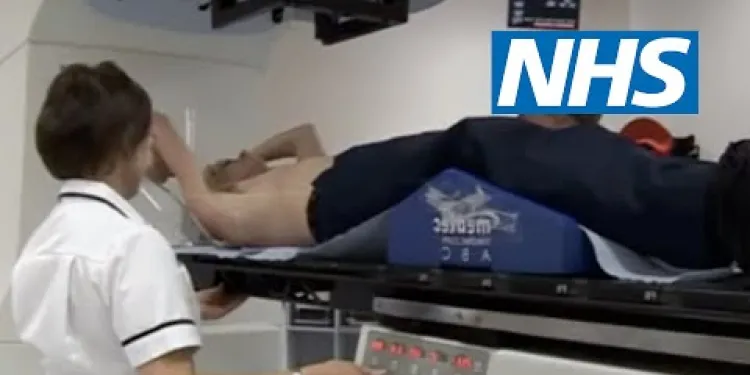
Cancer treatment: what happens during radiotherapy? | NHS
Relevance: 4%
-

Is the womb lining test covered by the NHS?
Relevance: 4%
-

Is the womb lining test covered by the NHS?
Relevance: 4%
-

What is the womb lining test?
Relevance: 4%
-

Endometrial Cancer
Relevance: 3%
-

Why might someone need a womb lining test?
Relevance: 3%
-

Pulmonary rehabilitation | NHS
Relevance: 3%
Hysteroscopy as an Outpatient: What to Expect
Introduction
A hysteroscopy is a procedure where a small telescope (hysteroscope) is inserted into the womb (uterus) via the cervix. This allows doctors to examine the inside of the uterus and is commonly used to investigate symptoms such as heavy periods, bleeding between periods, or postmenopausal bleeding. In the UK, hysteroscopies are often performed as outpatient procedures, meaning you can go home the same day.
Why You Might Need a Hysteroscopy
Common reasons for having a hysteroscopy include investigating abnormal uterine bleeding, diagnosing causes of infertility, removing polyps or fibroids, or assessing the shape of the uterus. Your GP or gynaecologist will refer you for this procedure if they believe it is necessary based on your symptoms and medical history.
Preparing for the Procedure
Before your hysteroscopy, you may be advised to take pain relief, such as ibuprofen or paracetamol, about an hour before your appointment. This can help alleviate discomfort during and after the procedure. It’s also advisable to have someone accompany you to and from the appointment, even though you will not be under general anaesthesia.
During the Hysteroscopy
When you arrive for your outpatient procedure, you will change into a hospital gown. The procedure is usually performed while you lie on an examination table with your legs in stirrups. The hysteroscope, equipped with a light and camera, is gently inserted through the cervix into the uterus. Saline solution may be used to expand the uterus for better visibility. The entire procedure typically lasts between 10 to 30 minutes.
What to Expect After the Procedure
After your hysteroscopy, you may experience some cramping or light bleeding, similar to a menstrual period. This is normal and should subside within a few days. Over-the-counter pain relief can help manage any discomfort. It is generally recommended to avoid using tampons and abstaining from sexual intercourse for a few days to reduce the risk of infection.
When to Seek Medical Advice
While a hysteroscopy is considered safe, complications can occur, though they are rare. Contact your healthcare provider if you experience severe pain, heavy bleeding, fever, or unusual discharge. These symptoms could indicate an infection or other complications requiring prompt medical attention.
Conclusion
A hysteroscopy is a valuable diagnostic and treatment tool that can be conveniently done as an outpatient procedure in the UK. Understanding what to expect can help ease any anxiety and ensure a smoother experience. If you have any concerns or questions, do not hesitate to discuss them with your healthcare provider before the procedure.
Hysteroscopy as an Outpatient: What to Expect
Introduction
A hysteroscopy is a procedure where doctors use a small camera (hysteroscope) to look inside the womb. The camera goes in through the cervix. Doctors do this to check for issues like heavy bleeding or bleeding after menopause. In the UK, you can have this done and go home the same day.
Why You Might Need a Hysteroscopy
You might need a hysteroscopy if you have unusual bleeding, problems getting pregnant, or to remove tiny growths like polyps. Your doctor will suggest this procedure if they think it will help find out what’s wrong.
Preparing for the Procedure
Before the procedure, you might need to take pain medicine like ibuprofen. This can help you feel less pain. It's a good idea to have someone with you to and from the hospital, even though you won’t be put to sleep.
During the Hysteroscopy
At the hospital, you will change into a gown. You will lie on a table with your legs up. The doctor will gently put the camera into your womb. They might use a liquid to see better. The procedure usually takes 10 to 30 minutes.
What to Expect After the Procedure
After the hysteroscopy, you might have cramps or light bleeding like a period. This is normal and should stop in a few days. You can take pain medicine if needed. Avoid using tampons and wait a few days before having sex. This helps prevent infection.
When to Seek Medical Advice
The procedure is quite safe, but if you feel a lot of pain, have heavy bleeding, or get a fever, call your doctor. These could be signs of an infection or other problems.
Conclusion
A hysteroscopy helps doctors find and treat problems inside the womb. You can go home the same day. Knowing what will happen can help you feel less worried. Talk to your doctor if you have any questions before the procedure.
Frequently Asked Questions
What is a hysteroscopy?
A hysteroscopy is a procedure that allows a doctor to look inside the uterus using a thin, lighted tube called a hysteroscope. It is used to diagnose and treat various conditions affecting the uterus.
Why might I need a hysteroscopy?
You might need a hysteroscopy to investigate abnormal bleeding, diagnose uterine conditions such as fibroids or polyps, remove intrauterine devices (IUDs), or perform sterilisation procedures.
Can I have a hysteroscopy as an outpatient?
Yes, a hysteroscopy is commonly performed as an outpatient procedure, meaning you can go home the same day without the need for an overnight stay in the hospital.
How should I prepare for the procedure?
Your doctor will advise you on specific preparations, but generally, you may be asked to avoid eating or drinking for a few hours before the procedure and to wear comfortable clothing.
Will I be sedated or receive anaesthesia?
Hysteroscopy can be performed using local anaesthesia, sedation, or sometimes without any anaesthesia depending on the complexity of the procedure and patient preference.
How long does a hysteroscopy take?
The procedure typically takes about 10 to 30 minutes, but you should plan to spend a couple of hours at the clinic to allow time for pre-procedure preparation and post-procedure recovery.
What should I expect during the procedure?
You will lie on an examination table, and a speculum will be inserted into your vagina. The hysteroscope is then gently passed through the cervix into the uterus to allow the doctor to examine its interior.
Is the procedure painful?
You may experience some discomfort or cramps similar to menstrual pain. Pain relief options, including local anaesthesia or sedation, are available to help manage any discomfort.
What are the possible risks and complications?
While generally safe, hysteroscopy can have risks including infection, bleeding, or accidental damage to the uterus or other pelvic organs. Your doctor will discuss these risks with you.
What should I do after the procedure?
You should rest for a short period before going home. Avoid strenuous activity and follow any specific instructions given by your healthcare provider. Mild cramping and spotting are usual for a few days after the procedure.
How soon can I return to normal activities?
Most patients can return to their normal activities within a day or two, but it’s essential to follow any advice given by your healthcare provider regarding activity levels and any restrictions.
Will I need someone to accompany me and take me home?
If you have had sedation or general anaesthesia, you should arrange for someone to accompany you to the procedure and take you home afterwards. For local anaesthesia, this may not be necessary.
When should I contact my doctor after the procedure?
Contact your doctor if you experience heavy bleeding, severe abdominal pain, fever, or any signs of infection such as unusual vaginal discharge after the procedure.
Will I receive the results immediately?
In some cases, the doctor may be able to discuss findings with you immediately after the procedure. If a biopsy is taken, results may take a few days or weeks to come back, and your doctor will schedule a follow-up appointment to discuss them.
Will the procedure affect my menstrual cycle?
You might experience changes in your menstrual cycle temporarily. This can include lighter or heavier periods, or some spotting between periods. Normal cycles usually resume after a short period.
What is a hysteroscopy?
A hysteroscopy is when a doctor looks inside a woman's womb. They use a small camera to help see if everything is okay.
Here are some tools or tips to help understand this:
- Look at pictures or videos about hysteroscopy. They can help you see what happens.
- Ask someone you trust to explain it to you in simple words.
- Write down any questions you have so you can ask a doctor or a nurse.
A hysteroscopy is when a doctor looks inside the uterus. The doctor uses a thin, bright tube called a hysteroscope. Doctors use this to see if there are any problems in the uterus and to help fix them.
Why might I need a hysteroscopy?
You might need a hysteroscopy if your doctor wants to look inside your uterus (womb). This is to check for problems or find out why you have pain or bleeding. It can help doctors see what is wrong and decide how to help you feel better.
Here are some ways to make reading easier:
- Ask someone to read the information with you.
- Use a ruler or your finger to follow the words.
- Take breaks if you feel tired.
- Look at pictures or watch videos about hysteroscopy to understand better.
You might need a test called a hysteroscopy. This test helps doctors look inside your womb. They use it to find out why someone is bleeding a lot, check for growths like lumps (called fibroids or polyps), take out things like birth control devices (called IUDs), or to stop someone from having babies.
Can I have a hysteroscopy without staying in the hospital?
Yes, a hysteroscopy is usually done in one day. You can go home on the same day and do not have to stay in the hospital overnight.
How can I get ready for the procedure?
Your doctor will tell you what to do to get ready. Usually, they might say not to eat or drink for a few hours before. Also, wear comfy clothes.
Will I be given medicine to help me relax or sleep during the procedure?
During a hysteroscopy, doctors look inside the uterus. You might not need to be asleep. They might use special medicine so you don’t feel pain. The doctor and patient will decide what is best. It can be done with:
- Medicine to stop pain around the area
- Medicine to make you sleepy
- No medicine, if it is a simple procedure
If you are unsure or nervous, you can ask the doctor questions. You can also ask someone you trust to help.
How long does a hysteroscopy take?
A hysteroscopy is a check-up doctors do to look inside a woman's womb.
It usually takes about 10 to 30 minutes.
Ask someone to go with you if you can. They can help you feel better.
Bring headphones to listen to music. Music can help you relax.
The procedure usually takes about 10 to 30 minutes. But you should plan to stay at the clinic for a few hours. This is because you need time to get ready before the procedure and to rest after it is done.
What happens during the procedure?
You will lie down on a bed. The doctor will use a tool called a speculum to gently open your vagina. Then, they will use another tool called a hysteroscope. This tool goes into the uterus through the cervix. This helps the doctor see inside your uterus.
Will it hurt?
We can help you understand the question better:
- Use simple words to explain.
- Read the question out loud.
- Ask someone to help you read.
You might feel some pain or cramps like period pains. There are ways to help with the pain, like using medicine to make you feel sleepy or using special numbing medicine.
What could go wrong or be dangerous?
Hysteroscopy is usually safe. But sometimes things can go wrong. There could be an infection, bleeding, or damage inside your tummy. Your doctor will talk to you about these risks.
What should I do after the procedure?
After the procedure, it’s important to take care of yourself. Here are some simple steps you can follow:
- Rest: Make sure you get plenty of rest. It’s okay to take it easy.
- Follow Instructions: Listen to the doctor's instructions. They will tell you what to do.
- Take Medicine: If the doctor gives you medicine, make sure to take it.
- Drink Water: Drink lots of water to stay healthy.
- Ask for Help: If you feel unsure or need help, ask a friend or family member.
If you have any questions, use tools like a smartphone to contact your doctor. You can also write down what your doctor says, so you remember.
You should rest for a little while before going home. Do not do anything too hard or tiring. Listen to what the doctor or nurse tells you to do. You might feel some small cramps and see a little blood for a few days after.
When can I get back to my usual things?
Most people can go back to their usual activities in a day or two. It’s important to listen to your doctor’s advice about what you can do and what you should not do.
Do I need someone to go with me and bring me home?
If you are having medicine to make you sleepy (sedation) or a big sleep (general anaesthesia) for your procedure, ask someone to go with you. They can help you get home safely after. If you only need a small numb (local anaesthesia), you might not need their help.
When should I call my doctor after the procedure?
Ask for help from a parent or friend if you find this hard. You can use pictures or videos to learn more.
If you have heavy bleeding, bad belly pain, a fever, or any signs of an infection like strange discharge from your vagina after the procedure, talk to your doctor.
Do I get the results right away?
After the test, the doctor might talk to you right away about what they found. If they took a small piece of tissue (called a biopsy) to look at, it can take a few days or weeks to get the results. Your doctor will ask you to come back to talk about what they find.
Will the treatment change my period?
This means: Will the treatment make my period start or end at different times?
Helpful tip: You can talk to a doctor or nurse if you have questions.
You might notice changes in your period. Your period could be lighter or heavier. You might see a little blood between periods too. This usually goes back to normal soon.
If you find reading hard, try using pictures or voice tools to help. They can make it easier to understand.
Useful Links
- Ergsy carfully checks the information in the videos we provide here.
- Videos shown by Youtube after a video has completed, have NOT been reviewed by ERGSY.
- To view, click the arrow in centre of video.
- Most of the videos you find here will have subtitles and/or closed captions available.
- You may need to turn these on, and choose your preferred language.
- Go to the video you'd like to watch.
- If closed captions (CC) are available, settings will be visible on the bottom right of the video player.
- To turn on Captions, click settings .
- To turn off Captions, click settings again.
More Items From Ergsy search
-

Having a hysteroscopy as an outpatient (English)
Relevance: 100%
-

What is Drugs Rehab?
Relevance: 17%
-

Can a womb lining test detect cancer?
Relevance: 12%
-

Finding out about Fibroids - information for patients
Relevance: 12%
-

Can a womb lining test detect cancer?
Relevance: 11%
-

Heavy periods (heavy menstrual bleeding)
Relevance: 11%
-

What is Medicare and what does it cover for seniors?
Relevance: 10%
-

Undergoing day case surgery at University Hospitals Bristol
Relevance: 9%
-

Where can I get the flu vaccine?
Relevance: 9%
-

Eating disorders: treatment
Relevance: 8%
-

Having chemotherapy and other treatments in the Day Treatment Unit
Relevance: 8%
-

The treatment approach for an eating disorder
Relevance: 8%
-

What is an endoscopy?
Relevance: 7%
-

Lumbar surgery | NHS
Relevance: 7%
-

Chemotherapy - The Queen's Centre
Relevance: 6%
-

Anorexia nervosa | NHS
Relevance: 6%
-

Gastroscopy - What to Expect on Referral to Chesterfield Royal Hospital
Relevance: 6%
-

Bournemouth Digestive Diseases Centre: Gastroscopy Procedure (Subtitled)
Relevance: 6%
-

Having a colposcopy at Leeds Teaching Hospitals
Relevance: 6%
-

Abdominal Aortic Aneurysm (AAA) screening programme
Relevance: 6%
-

Navigating Mental Health Services for Children and Adolescents
Relevance: 6%
-

What is the recovery time for a hip replacement?
Relevance: 6%
-

Will I need physical therapy after a hip replacement?
Relevance: 6%
-

What is egg retrieval?
Relevance: 6%
-

Post Menopausal Bleeding Clinic | A Guide to What Happens at An Appointment
Relevance: 6%
-

Having a hip replacement - Part Two: Recovery
Relevance: 6%
-

Endoscopy Introduction - The Patient Journey
Relevance: 6%
-

Total knee replacement
Relevance: 6%
-

What is a mini facelift?
Relevance: 6%
-

What is Alcohol Rehab?
Relevance: 6%
-

Treating prostate cancer
Relevance: 5%
-

Cornea transplant patient Information
Relevance: 5%
-

What to expect when visiting our hospitals for surgery | Theatres
Relevance: 4%
-

Cancer treatment: what happens during radiotherapy? | NHS
Relevance: 4%
-

Is the womb lining test covered by the NHS?
Relevance: 4%
-

Is the womb lining test covered by the NHS?
Relevance: 4%
-

What is the womb lining test?
Relevance: 4%
-

Endometrial Cancer
Relevance: 3%
-

Why might someone need a womb lining test?
Relevance: 3%
-

Pulmonary rehabilitation | NHS
Relevance: 3%


